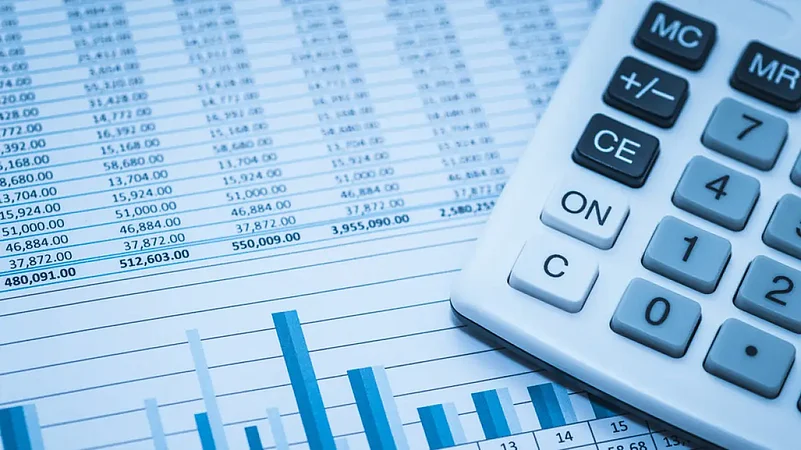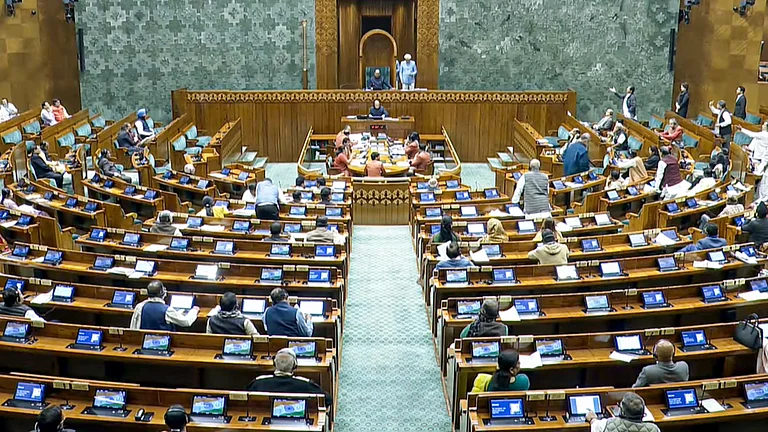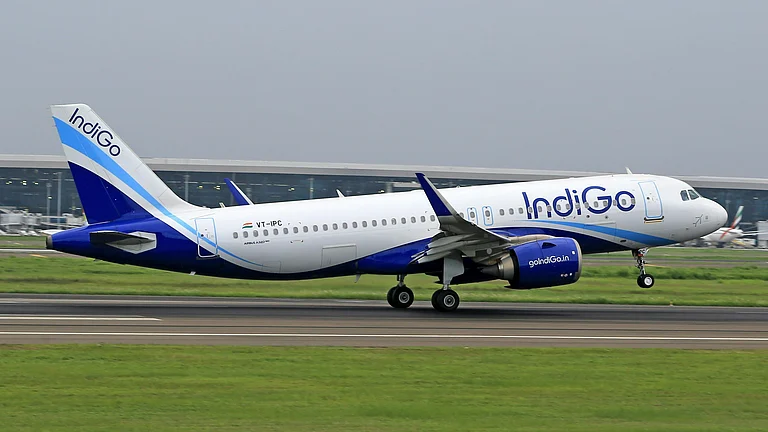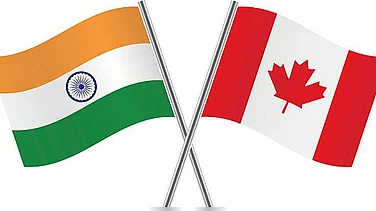The economic collapse of neighbouring Sri Lanka seems to have left the Reserve Bank of India jittery with the apex bank looking inwards at India’s own fiscal prudence in a recent report. The result left the states, especially West Bengal, Kerala, Punjab, Rajasthan and Andhra Pradesh, at the receiving end of fiscal scrutiny as the RBI flagged concern over their finances.
Pointing out the gaps in Indian states’ fiscal health against the backdrop of the Sri Lankan crisis, the RBI report titled State Finances: A Risk Analysis chose to focus on these states, further stating that their fiscal health warranted a careful assessment. Interestingly, all five are opposition-ruled states that have had a larger focus on social welfare.
Taking an overall view, the apex bank said that fiscal conditions among states in India are showing warning signs of building stress. This has set off alarm bells at a time when the states were just limping back to normalcy after the Covid impact and the lingering slowdown while also battling GST compensation woes in their fight with the Centre. At the same time, the report has also reignited the debate on how growth itself should be measured.
A State Of Concern
The RBI report attempted to put the spotlight on the fiscal risks confronting the state governments in India with emphasis on the heavily indebted states. It said that a slowdown in the states’ own tax revenue, a high share of committed expenditure and rising subsidy burdens have stretched state government finances that were already exacerbated by Covid-19.
“New sources of risks have emerged—relaunch of the old pension scheme by some states; rising expenditure on non-merit freebies; expanding contingent liabilities; and the ballooning overdue of DISCOMs - warranting strategic corrective measures. Stress tests show that the fiscal conditions of the most indebted state governments are expected to deteriorate further, with their debt-GSDP ratio likely to remain above 35 per cent in 2026-27,” the report said.
The RBI further made its point by stating that between 2011-12 and 2019-20, the average gross fiscal deficit (GFD)-gross state domestic product (GSDP) ratio of the states remained modest at 2.5 per cent, lower than the Fiscal Responsibility Legislation (FRL) ceiling of 3 per cent.
The report, however, said there were substantial inter-state variations. “While Andhra Pradesh, Kerala, Punjab and Rajasthan incurred average GFD of above 3.5 per cent of GSDP, Assam, Gujarat, Maharashtra, Odisha and Delhi ran ratios less than 2 per cent,” it said.
Based on the debt-GSDP ratio in 2020-21, Punjab, Rajasthan, Kerala, West Bengal, Bihar, Andhra Pradesh, Jharkhand, Madhya Pradesh, Uttar Pradesh and Haryana have turned out to be the states with the highest debt burden, accounting for around half of the total expenditure by all state governments in India. The report says that Kerala, Jharkhand and West Bengal exceeded the debt target for 2020-21 set by the 15th Finance Commission.
For the five most indebted states—Punjab, Rajasthan, Bihar, Kerala and West Bengal—the RBI said that the debt stock is no longer sustainable as the debt growth outpaced their gross state domestic product growth in the last five years, highlighting a deeper cause for concern.
Debt, however, alone should not be looked at as a marker of financial health, says Aditi Nayar, chief economist ICRA. An important thing is that debt alone should not be looked at as a marker of financial health. It should be debt plus guarantees. Also, off budget debt should be consolidated once the data becomes available to get a fuller picture of state indebtedness,” explains Aditi Nayar, chief economist ICRA.
The debt also puts a question mark on what the ideal nature of spending should be and whether a homogenised approach to growth is an economically sound one.
All About The Approach
But how are certain states doing fiscally better than the others? The answer lies in their approach to economic growth. While some focus on the GSDP growth, others bank on redistribution and betterment of the living conditions of its citizens. Most of the five states mentioned in the RBI report have had a historical focus of social welfare and upliftment.
Since these states tend to spend more on welfare policies, experts and economists have always pointed out the nature of spending underlining the poor economic policies. Several of their policies have been criticised as doles or freebies given to suit political interest.
“There are larger states that are fiscally well run and that have habitually spent less than 1.5-2 per cent of GDP on capital expenditure. These are mostly state-specific decisions and priorities. There is no one-size-fits-all (approach),” says Nayar.
For instance, Kerala’s GSDP contracted 9.2 percent during the financial year 2020-21 owing to Covid and its impact. Kerala’s growth rate had fallen to 3.46 per cent in 2019-20 after touching 6.49 per cent in 2018-19. However, there were other areas where Kerala excelled. The state’s near-perfect health infrastructure brought it international recognition when the pandemic struck.
In a 2020 article, ecological economist K.N. Ninan wrote that when the countrywide lockdown was imposed in 2020, Kerala had the highest number of Covid-19 patients in the country after Maharashtra in the initial weeks. But three months later, Kerala was one of the few states with the lowest number of infections and a fatality rate of just 0.5 per cent as against the national average of 3 per cent.
“As is well-known, right from the 60s and 70s, the United Nations and international development agencies have praised the Kerala model of development. Although Kerala lagged other Indian states in terms of economic growth, it was noted that in terms of social and health parameters, such as literacy levels, life expectancy and infant mortality rate, Kerala’s performance was like that of the developed countries,” Ninan wrote.
In Punjab’s case, its GDP growth slowed to 4 per cent in 2019-20 from 6 per cent in the two preceding years. In 2020-21, the state's GDP contracted 7 per cent. At the same time, the National Family Health Survey shows that it was among the first states that achieved the goal of supplying electricity to every household. It has also substantially achieved universal coverage of drinking water as well.
Surprisingly, West Bengal, another state on the RBI’s radar, was one of the few states that recorded a positive GDP growth rate of 1.2 per cent in 2020-21 when India, on the whole, recorded a contraction of 7.7 per cent. But a persistent complaint against West Bengal has been its failure to generate enough jobs.
While the criticism holds true in the case of the formal sector white-collar jobs, by definition, jobs do not constitute just those. According to Bengal’s budget documents, it has the second-largest number of micro, small and medium enterprises in the country, which constitutes 3.7 million businesses that generate employment for 8.6 million people. The national Periodic Labour Force Survey (PLFS) 2017-18 shows that while unemployment rose between 2011-12 and 2017-18, the state managed to keep the unemployment rate, both in rural and urban Bengal, below the national average. According to the PLFS 2017-18, Bengal’s unemployment rate was 4.6 per cent—lower than the all-India unemployment rate of 6.1 per cent.
The RBI aims to highlight what kind of public finance strategy these states were following to balance growth and welfare during a crisis like Covid as opposed to the central government that opted for growth-enhancing policies, says NR Bhanumurthy, vice-chancellor of Dr. B.R. Ambedkar School of Economics University, Bengaluru.
“Centre did not opt for freebies. The Centre made more targeted interventions through the Food Security Act. Doles and freebies do not necessarily address concerns of poverty. When states’ revenues have already been impacted by overall declining GST revenue, it is advisable to opt for wiser policies when their budgets are under stress,” Bhanumurthy says.
Speaking of GST, the RBI report also highlighted that with the Centre’s GST compensation payout coming to an end in June, it will further reduce the headroom available for social sector expenditure.
“In such a situation, a multitude of social welfare schemes in the form of freebies will not only put a heavy burden on the exchequer but will also exert upward pressures on yields if they are financed through market borrowing,” it said. GST compensation has been a major issue for chasm between the states and the Centre over the last few years and the burden is only going to deepen the fissures.
What Is Growth Anyway?
An often-heard argument from growth economists is that supply-side reforms and increased capital expenditure are the only ways to address poverty through multiplier effect. Most of them only look at GDP as an indicator of growth which has often been challenged by welfare economists.
Welfare economists, on their part, have pointed out that GDP growth does not necessarily entail poverty reduction.
India’s GDP growth is heavily concentrated in favour of the rich and large corporations and when GDP grows, 90 per cent of it is accruing to the top 10 per cent population, says development economist Jayati Ghosh.
“In that, too, there are regional variations, particularly marked in terms of southern states versus the rest of India. For instance, Kerala and Tamil Nadu. Kerala begins with good human development indicators and continues to improve them. Tamil Nadu has shown a remarkable improvement. Even Telangana has done well,” Ghosh explains.
The pandemic taught us that in addition to the broader human development indicators that we look at, like food security and life expectancy, it is important to look also at vulnerability and resilience, she says, adding that while talking of states’ economic performance, it is essential to look at how far each state has succeeded in reducing the vulnerability of their people.
“In terms of that (reducing vulnerabilities), the states that have been singled out, have performed much better. West Bengal is more complicated but it has performed better in terms of providing just social protection during the pandemic. So, if we are talking about performance of states in terms of what they delivered to people, these states performed better,” says Ghosh.
The Covid-19 pandemic exposed the limits of India’s health infrastructure and brought the country, especially its poor, to its knees. While numbers drive in foreign investment and big projects, they may not provide either a holistic or an inclusive perspective to reality. The answer to what growth means in the truest sense of the term remains fairly elusive.






























